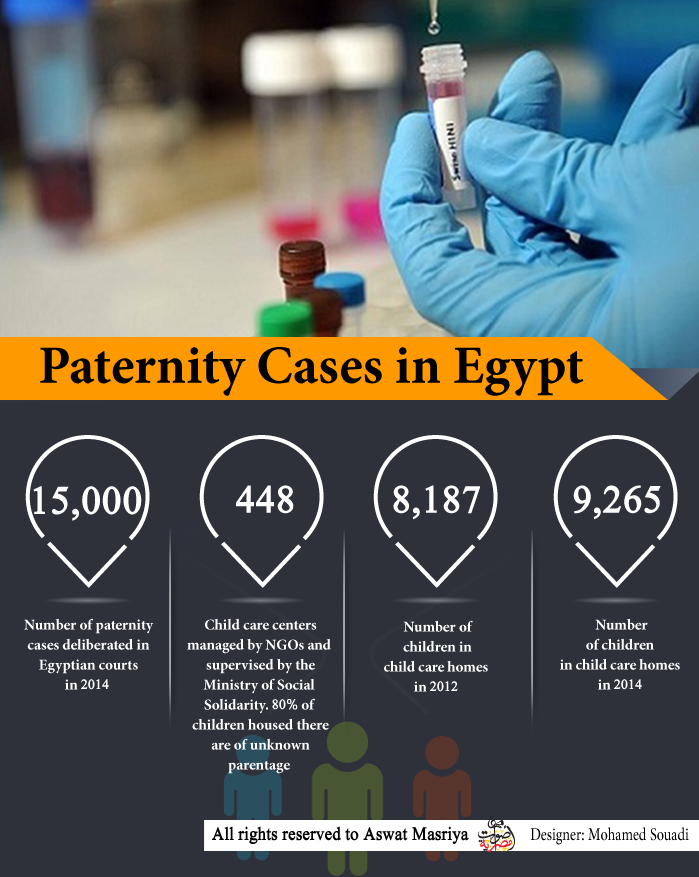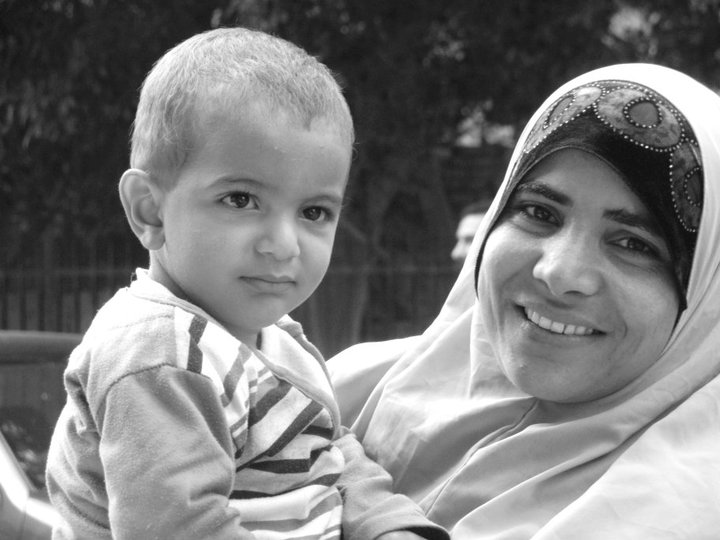By Omnia Talal, Aswat Masriya
It took Nadia almost twenty years to prove that her ex-husband was indeed the father of her daughter.
By the end of 2011, 49 and divorced, Nadia won a case confirming the identity of her daughter’s father and finally allowing her 25-year-old to issue a national identification card, a document vital for everyday life which must by law be obtained by all citizens at age 16. Without a national ID number, her daughter had no access to post-secondary schooling, a job, the right to vote, travel or conduct the most basic financial or administrative transactions, or even get married.
Years back, Nadia had entered into a common-law (urfi) marriage. She gave birth to her daughter just days after the marriage was officiated in 1985. Shortly after, the two were divorced, but her ex-husband amicably agreed to pay child support, which he continued doing for four years until one day he stopped, and in 1990 he raised and won a court case denying that he was the father, using his daughter’s birth date to cast doubt on her parentage.
Deprived of all her basic rights to education and work, the daughter was caught in the middle of a paternity dispute, which Nadia filed in court in 2008 to void the 1990 ruling. After three whole years of toiling through Egypt’s convoluted legal loopholes, she won the case.
In another tragic example, the story of Manal, now in her fifties, is a case study in legal and social discrimination against women. When her husband found out that she was pregnant with their third daughter, as opposed to the much-coveted son, after six years of marriage, he simply walked out, refusing to issue birth certificates to the youngest two lest he be required to pay child support.
After years of struggle to make ends meet, Manal initiated two cases: one to get a divorce and another to prove her daughters’ parentage. It took another year and a half to prove that her ex-husband was the father of her daughters and it was a miracle she succeeded by default because he failed to appear in court or hire a lawyer.
A little-known phenomenon
According to judicial sources, in 2014 alone courts deliberated 15,000 paternity cases filed by mothers who have to bear the brunt of a legal framework that is nothing short of biased, in the form of personal status law No. 25/1920 which was amended twice until it reached its current version law No. 100/1985.

Whether the parties to these cases were officially married or engaged in common law marriages, judges are likely to dismiss paternity cases based on a principle in Islamic jurisprudence that stipulates that a child’s parents are those who are known to be “sharing the same bed”, a ruling based on a Hadith by Prophet Muhammad Peace Be Upon Him.
This means that by law the father is the one who was married to the woman, even if it is in a socially-shunned urfi marriage, as long as it is documented and it is publicly known that the couple are living together. In such cases the court will dismiss claims by mothers that a different man was the father of the child.
The husband’s lawyer used loopholes in Nadia’s case even though she was married to her ex-husband when her child was conceived and born. This kept her in a legal grey area for years until she finally proved his paternity through the child support payments he made for four years before disowning his daughter, which the court saw as a clear admission that he is the father.
The issue of proving paternity is further exacerbated by the fact that Egyptian law does not stipulate that men party to such disputes undergo DNA testing whose results are 99.9% definitive. The alleged father has the right to refuse to do the test and the law does not impose it, nor does it impose a penalty for refusing to do it.
Justice Hassan Mansour, Deputy Head of the Court of Cassation told Aswat Masriya that there are no statistics classifying how many of the 15,000 paternity cases heard in court in 2014 are related to official, common law marriages or out-of-wedlock relationships.
Apart from the confusion caused by the fact that personal status issues are governed by several laws, which some women’s rights advocates believe should be unified under a single family law, lawyer Mohamed El-Dakar explains that legal proceedings in paternity cases are mainly hampered by article 9 of family courts law No. 10/2004 and article 63 of the procedural law.
Article 9 stipulates that cases filed at family courts must first go through a conflict resolution process between the two parties, which, according to the procedural law can take weeks and weeks if the disputed party presents new evidence, files a new case, complains from the court or requests that the judge be recused.
The Right to an Identity
Article 7 of the United Nations Convention on the Rights of the Child, which Egypt ratified in May 1990 stipulates: “1. The child shall be registered immediately after birth and shall have the right from birth to a name, the right to acquire a nationality and. as far as possible, the right to know and be cared for by his or her parents. 2. States Parties shall ensure the implementation of these rights in accordance with their national law and their obligations under the relevant international instruments in this field, in particular where the child would otherwise be stateless.”
Article 8 of the convention further stresses that: “1. States Parties undertake to respect the right of the child to preserve his or her identity, including nationality, name and family relations as recognized by law without unlawful interference. 2. Where a child is illegally deprived of some or all of the elements of his or her identity, States Parties shall provide appropriate assistance and protection, with a view to re-establishing speedily his or her identity.”
Yet, Egypt’s local legislation seems to work against the ideals to which it is signatory.
Article 15 of child law No. 126/2008 gives the father an open right to issue a birth certificate for his newborn. And in what was a milestone compared to the previous version of the law (No. 12/1996) mothers too were given the same right provided they present documents proving their marriage to the father in accordance with executive procedures.
However, because the same law does not stipulate DNA testing to prove paternity, mothers embroiled in disputes with husbands have only one of two choices: To name their child after their own father, or to ask the authorities to choose a name pending a final verdict on the paternity case.
Clandestine marriages
According to lawyer Taher Abol Nasr the majority of paternity disputes are related to undocumented urfi or secret marriages unknown to family and have no witnesses, which can take years in court because the nature of the relationship cannot be proven.
In the absence of legislation obligating men to undergo DNA testing, only documented evidence of the marriage will be accepted in court as proof of paternity. The situation is further complicated for mothers by the backlog of cases since judges are expected to hear upwards of 70 personal status cases a day, many of which are postponed multiple times.
Legal milestone
A legal amendment passed by presidential decree in April 2015 to social solidarity law No. 137/2010, while not addressing the chronic issue of proving parentage, at least to some measure improved conditions for mothers involved in paternity disputes.
The amendment broadened the definition of an orphan to include children of unknown parentage, whether the unknown parent is the father or mother. This allowed women involved in common law marriages to issue a temporary birth certificate to her newborn using the name of the father that she mentions, until the court issues its final verdict in the paternity case.
This would give the child access to government schooling and other social and economic protections available for orphans.
*Only psuedonyms have been used in this report upon the request of our sources and to guarantee privacy.







Comment (1)
buy coursework
…Buy Coursework. If you are tired of all these paper writing assignments, it doesn’t really matter which one you are supposed to accomplish next. The problem is …